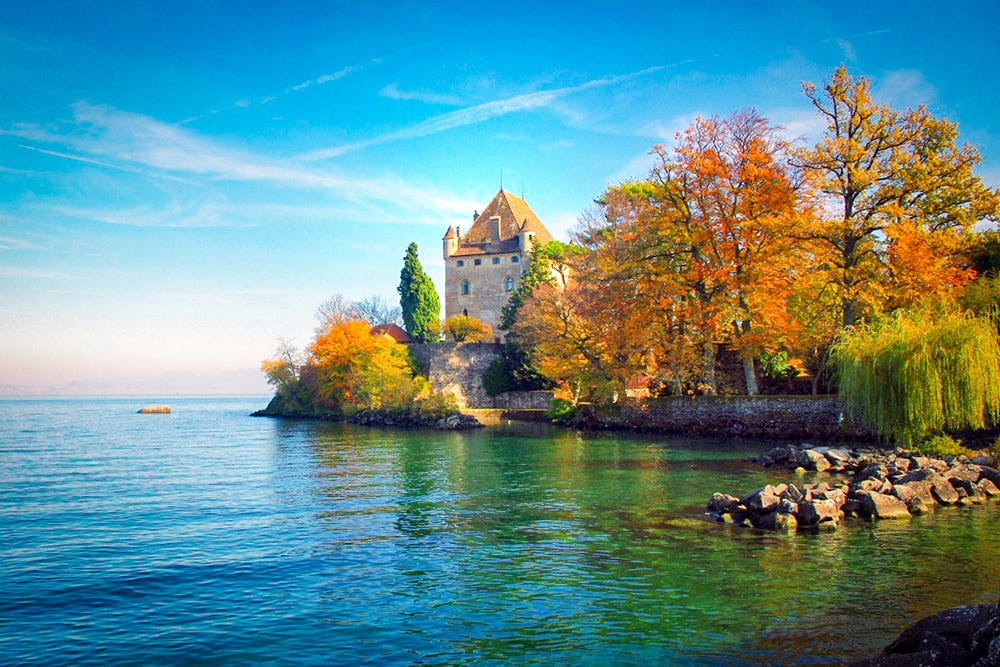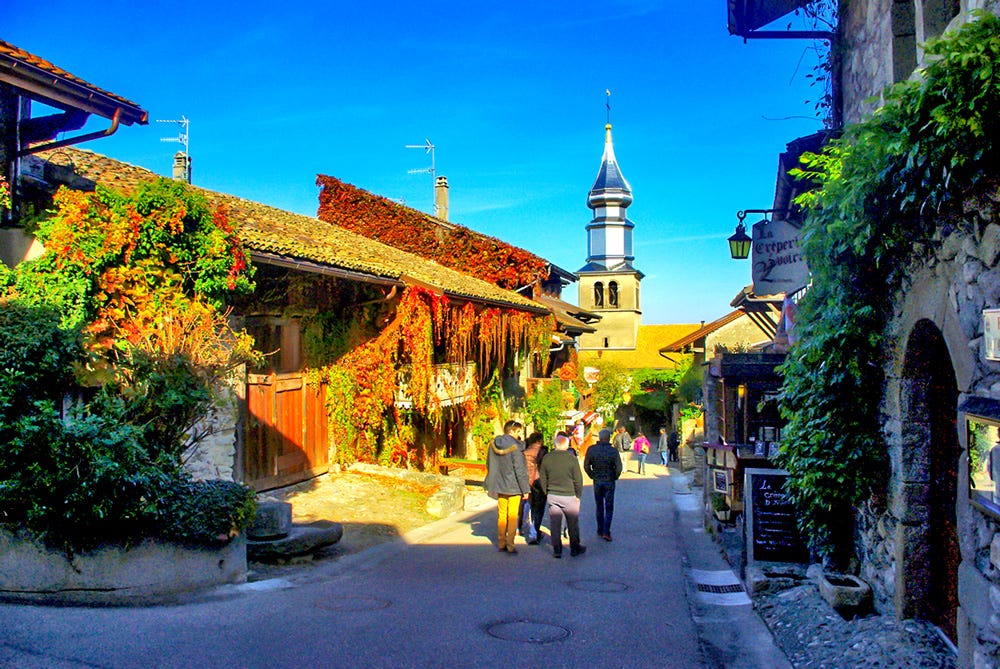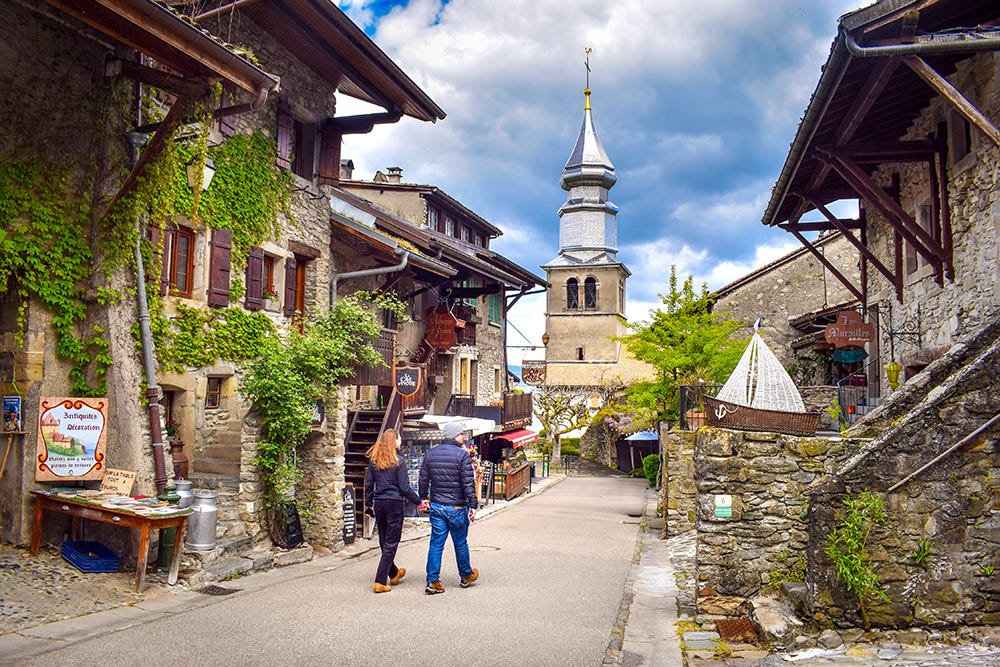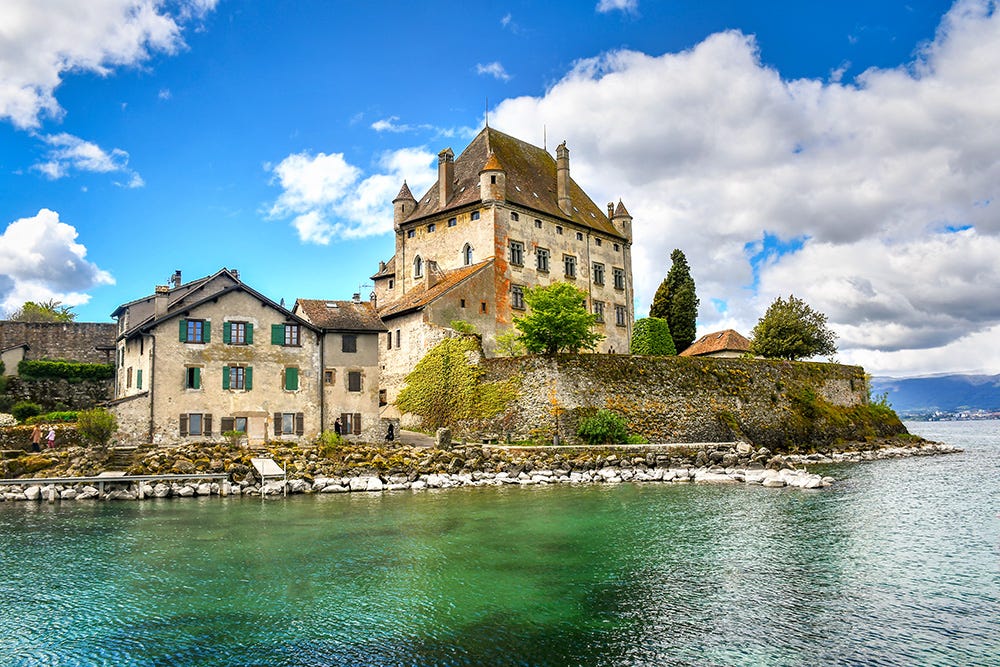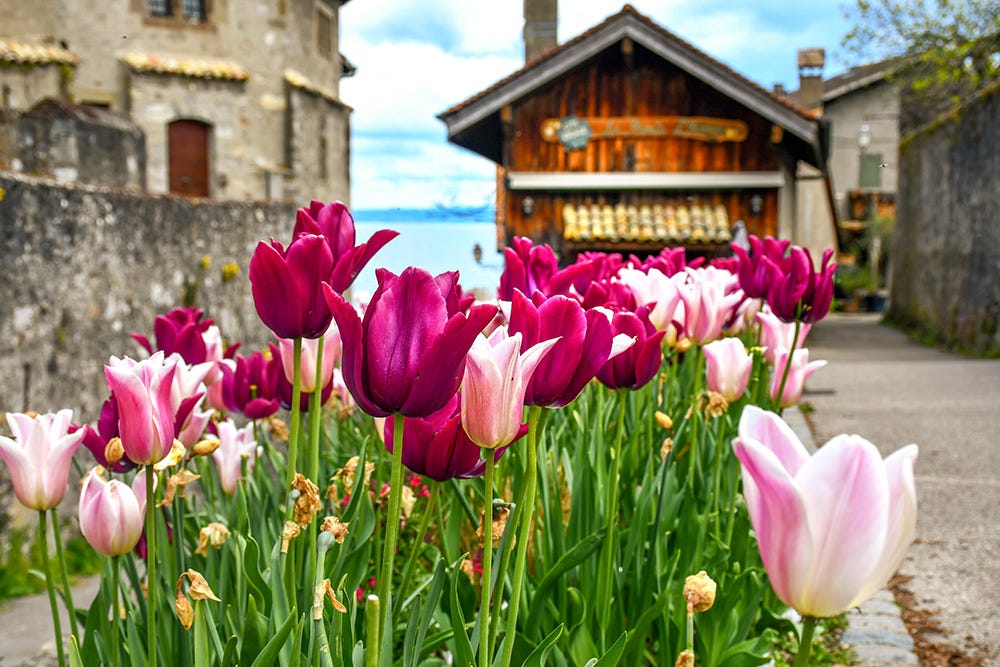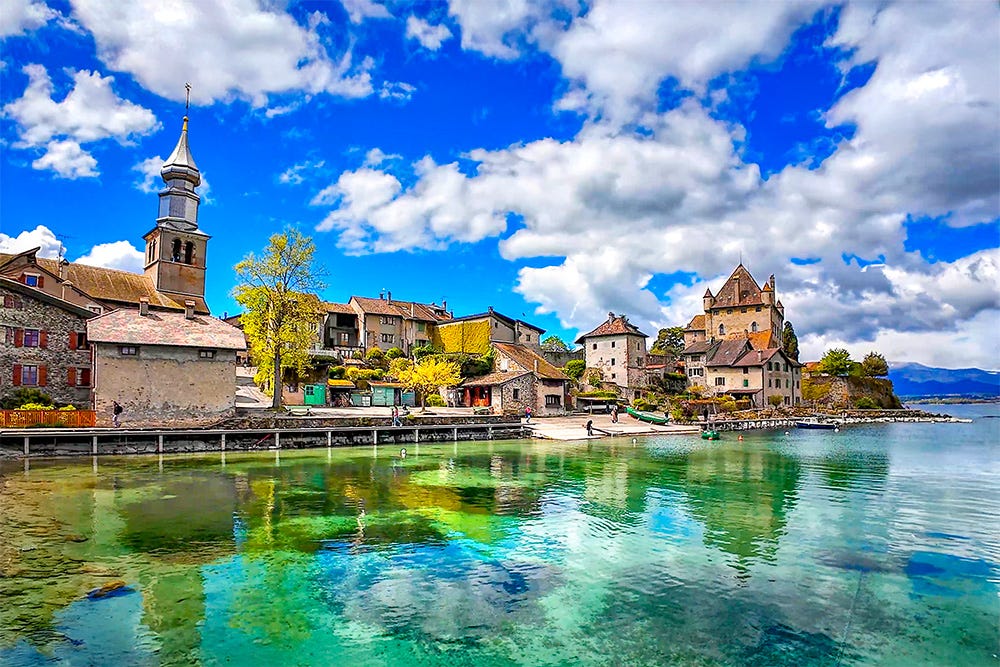Why I Had to Film This Village on Lake Geneva Now, After All This Time
A new video, a story that began decades ago, and a peaceful walk through one of France’s most beautiful villages. Come along?
For months now, some of you have been asking:
"Will there be more video tours? Are you still filming villages in France?"
And every time, I’d think, Yes, I will, and then… life.
You know how it goes.
A busy schedule, new projects piling up, and suddenly it’s been three years since your last upload.
But something shifted this spring. I grabbed my camera again, brushed off the cobwebs (both literally and metaphorically), and headed to a place I’d been meaning to revisit for ages: Yvoire.
Now, before I get too carried away—yes, I’ve made a new video.
You can watch it right here on YouTube.
It’s a full guided walk through this picture-perfect village on Lake Geneva.
Filmed in April, with flowers just starting to bloom, and the lake still shimmering in that silvery-blue way that makes you want to just stop and stare for a while.
But hang on. Let me take a step back.
The First Time I Saw Yvoire
I first visited Yvoire in the early 1990s.
I was still a teenager, and my family was staying in Les Rousses, in the Jura.
One day—maybe it was for my birthday?—we decided to take a day trip across the Swiss border and into Haute-Savoie.
We had this train + boat combo ticket (which, by the way, still exists) and crossed over to Nyon by train, then sailed across the lake to Yvoire.
I didn’t know it back then, but that little medieval village, with its stone houses and flower-covered balconies, would stay with me for years.
I remember the moment I saw the castle from the lake for the first time.
It looked like something from a storybook—massive, square, solid, but softened by the gentle waves of the lake at its feet.
And the water... Oh, the lake.
It wasn’t turquoise or green like in travel brochures.
It was silver. Still. Mysterious. Cold. I was fascinated.
A Quiet Autumn Stroll, Years Later
Since that first visit, I’ve gone back a few times.
The most memorable was in 2017, when we were living near Annecy.
That autumn, I took my family there—my daughter was still very young, and she was enchanted by the narrow streets and the old stone walls.
We walked slowly, pausing every few steps to admire a window box, or peek into a garden.
Yvoire was quiet that day.
No crowds, just a light breeze and the sound of leaves brushing the cobblestones.
The lake, again, was still.
That memory stuck.
So when I decided to film again, it felt right to return there.
To walk the same streets, now holding a camera, and speak not just to a lens but to you—as if I were showing you around myself.
What Makes Yvoire So Special
Now, what’s so special about Yvoire?
That’s hard to put into a neat sentence.
It's the kind of place that doesn’t scream. It whispers. It doesn’t overwhelm you—it invites you in gently.
It’s not big. You can walk across the whole village in fifteen minutes.
But you won’t. Because every little corner, every alley, every flowerpot makes you stop.
There’s history in the stones, sure—but also a kind of joy in how lovingly everything is maintained.
The village dates back to the 14th century, fortified by the Counts of Savoy.
That big square castle you see from the lake?
It was built between 1306 and 1319. Private property, by the way—still inhabited by the same family since the 17th century.
No, you can’t go in. And yes, you’ll wish you could.
There are two main gates—Rovorée and Nernier—that once controlled who came in and out.
Today, they’re perfect for framing photographs. Especially in spring or autumn, when the light slants just right and the flowers spill over in every direction.
A Village That Blooms All Year Long (except in Winter!)
Oh, speaking of flowers—Yvoire doesn’t mess around.
The whole village is basically a floral display. They’ve been awarded the “Four Flowers” label multiple times, and they absolutely earn it.
Even in April, when I filmed, the flowers were already warming up for the season.
And if you’re into gardens (or even if you’re not), the Garden of the Five Senses is worth a slow visit.
It used to be the castle’s vegetable garden. Now it’s a peaceful maze of herbs, fruit trees, fountains, birdsong, and scents.
You wander through sections dedicated to taste, touch, smell, sight and sound. It’s beautiful in the quietest way.
Behind the Camera This Time
I filmed this latest video with no rush.
I took my time.
I followed the little Rue des Boulangers.
Walked along the lakeside. Paused by a drinking fountain (yes, the water’s safe—helpful when the sun’s out).
I circled back to the village square, to the church with its shiny onion-shaped dome.
Did you know the spire was rebuilt in stainless steel in 1989, and topped with a gold leaf weathervane? When the sun hits it, it sparkles like a lighthouse.
On some streets I walked twice, just because the light had changed.
Others I skipped altogether, then came back a few hours later.
A Few Thoughts If You Go
Looking back, I realise how lucky I was to have seen Yvoire before it became what it is today.
Not that it’s overrun—it isn’t, not really.
But word has spread. Especially among Swiss tourists, who hop over by boat from Nyon just for lunch.
By noon in summer, it’s full. Not unpleasantly so, but enough that you start to miss the quiet.
So if you go—and I hope you do—try to visit midweek. In spring or autumn if you can.
Park outside the village, wear good shoes (yes, the streets are cobbled), and give yourself time. Yvoire doesn’t want to be rushed.
Watch the Video, Walk With Me
There’s more in the video—lots more.
I guide you step by step, sharing little historical facts, a few childhood memories, and plenty of “look at that view!” moments.
I didn’t script too much. Just walked and talked, the way I would if you were walking next to me.
🎥 Here’s the video again, in case you missed it: Watch the Yvoire tour on YouTube
If you enjoy it, please do leave a comment or a like. It helps more than you’d think.
And if you’ve ever been to Yvoire yourself, I’d love to hear what you thought—whether it was ten years ago or just last summer.
Thanks for walking with me.
Really. It means a lot.
Until next time!





